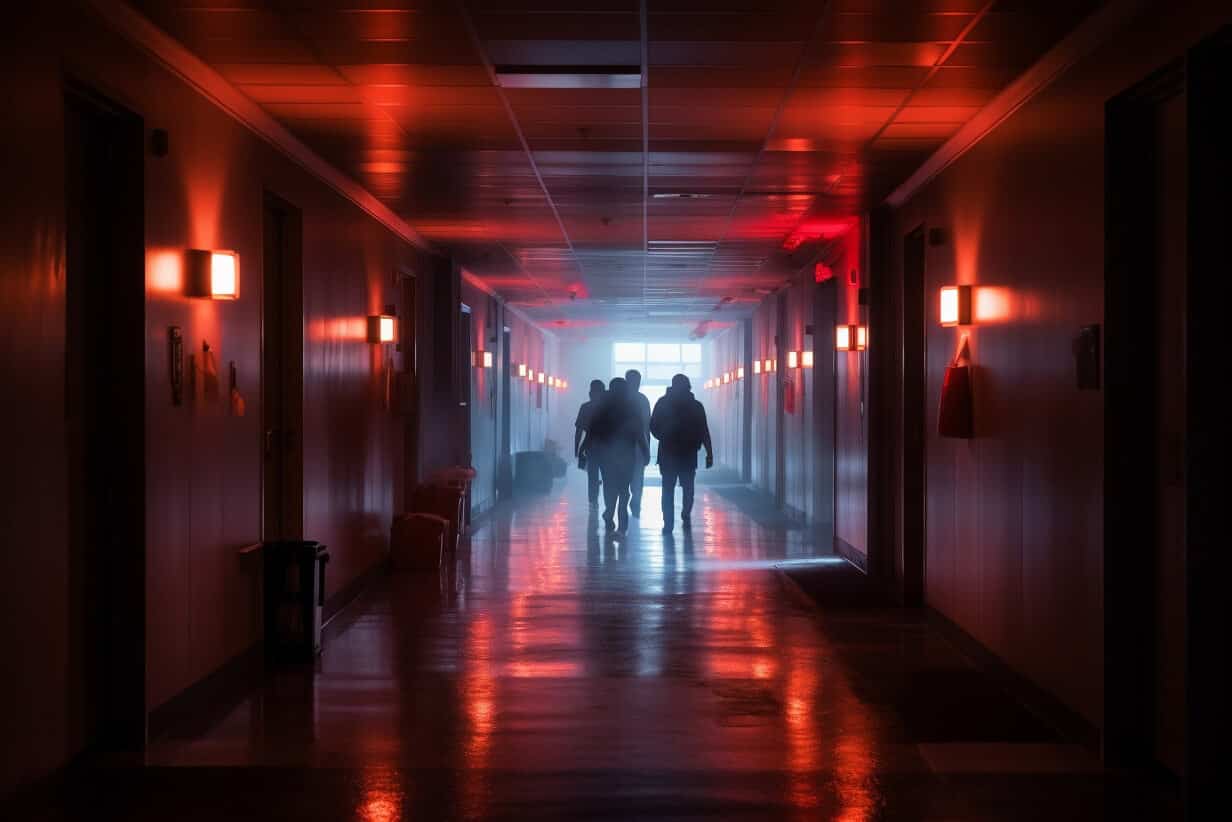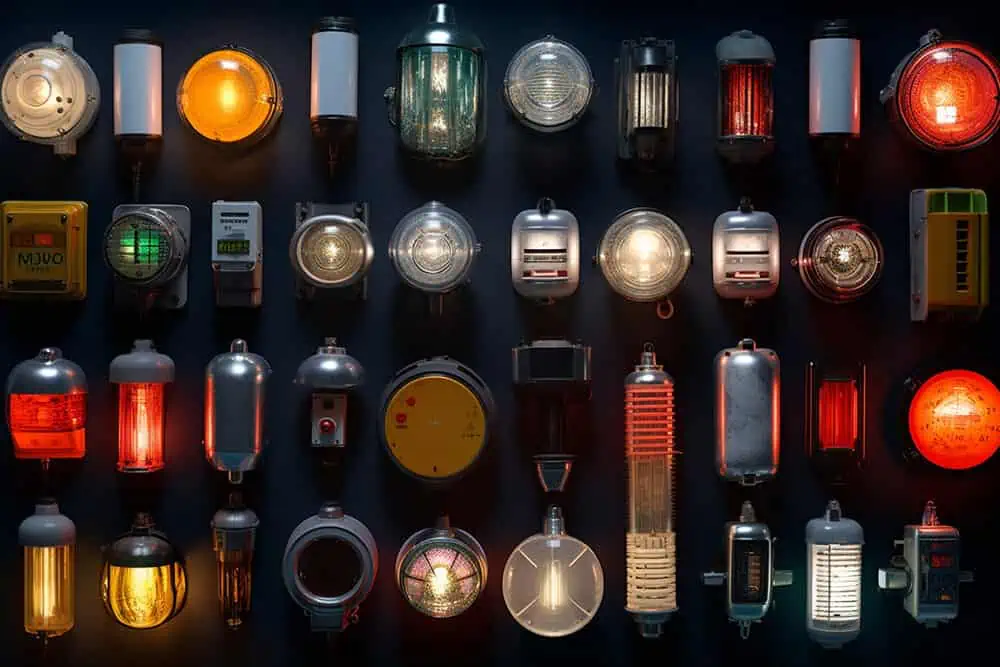Have you ever been in a situation where a sudden power outage leaves you in total darkness? Or maybe you're in a large building when the fire alarm goes off and you're not sure where the nearest exit is. These scenarios can be disorienting and potentially dangerous, which is where emergency lighting comes into play.
Emergency lighting is an important aspect of any building security measures. It provides lighting in the event of a failure of the regular power supply, ensuring that occupants can leave the building safely. It also highlights firefighting equipment and exit routes, reducing panic and confusion during emergencies.
So, let's take a deeper look at emergency lighting and why it matters.

What are the Different Types of Emergency Lighting?
Emergency lighting is not a one-size-fits-all solution. There are several types, each designed to meet specific needs and requirements.
Maintenance Emergency Lighting Stays on at all times for general and emergency lighting. This type is common in theaters, movie theaters, and other places where sudden darkness can cause panic.
Non-maintenance emergency lighting, on the other hand, is only activated in the event of a mains power failure. It is often used in workplaces and other buildings where the occupants understand the layout.
Continuous Emergency Lighting Combine the two, with one set of lights for regular use and the other set for emergencies.
Self-contained emergency lighting with all components inside the luminaire, including batteries and control unit. This type is easy to install and maintain, making it a popular choice for many buildings.
Central battery powered emergency lighting uses a central battery to power all emergency lights in a building. While more complicated to install, it has advantages such as easier maintenance and longer battery life.
Standby lighting is another type of emergency lighting that provides light for normal activities to continue during a power outage. However, it is not a substitute for escape lighting.
What are the subcategories of emergency lighting?
Emergency lighting can be divided into subcategories based on use and location.

Emergency Escape Lighting Provides lighting for the safety of persons leaving a location or attempting to terminate a potentially hazardous process. It is part of the fire safety regulations for buildings.
Standby lighting allows normal activity to continue during a power failure. However, it is not considered emergency lighting under certain regulations.
Escape Route Lighting Make sure escape routes are well lit so people can exit the building safely and quickly.
Open area lighting, also known as anti-panic lighting, minimizes panic when people gather and facilitates an orderly evacuation.
High-Risk Task Area Lighting Provides illumination for safety-critical tasks that must be completed prior to evacuation to ensure the safety of those involved.
What are the components of emergency lighting?
Like any other system, emergency lighting consists of several important components.
The light source is the most visible part of the system. It can be any lamp or LED that provides adequate lighting.
The power supply supplies power to the light source. In the case of emergency lighting, this is usually an auxiliary power source separate from the main building power supply.
Batteries play a vital role in emergency lighting systems. It stores energy when the main power supply is working normally, and then provides the stored energy to the light source when the main power supply fails. This ensures that emergency lights work during a power outage, providing the necessary lighting for safe evacuation.
The control unit manages the operation of the emergency lighting system. It monitors main power and switches to battery power if a failure is detected.
Which standards and regulations apply to emergency lighting?
Emergency lighting is governed by various standards and regulations to ensure its effectiveness and reliability.
BS5266-1 is a British Standard that provides guidance for the design, installation and wiring of emergency lighting systems. It covers areas such as luminaire performance, test procedures and documentation.
The Regulatory Reform (Fire Safety) Order 2005 is a UK law requiring building owners to ensure the safety of occupants in the event of a fire. This includes providing adequate emergency lighting.
Depending on the location and type of building, there are other relevant national and international standards which may apply.
How is emergency lighting designed and installed?
The design and installation of emergency lighting requires careful planning and consideration.

Design considerations include the type and duration of lighting, the size and purpose of the building, and the presence of any specific hazards. The goal is to ensure that all escape routes and safety equipment are adequately illuminated in an emergency.
The installation process includes putting the lights in place, connecting them to a power source, and setting up the control unit. A qualified electrician should perform all work safely and in compliance with regulations.
Finding your emergency lights is a critical part of the installation process. Lights should be placed near exits and fire fighting equipment, along escape routes and in large open areas. They should also be positioned to minimize shadows and glare.
Why is planning important in emergency lighting?
Planning is a critical step in ensuring the effectiveness of your emergency lighting system.
The importance of planning cannot be overstated. A well-planned system will provide adequate lighting in all key areas, guiding occupants safely away in an emergency.
Planning an emergency lighting installation includes assessing the needs of the building, designing the system, selecting the appropriate lights, and planning their location. Regular testing and maintenance should also be part of the plan.
What is the duration of emergency lighting?
The duration of emergency lighting refers to how long the lights will stay on in the event of a power outage. It depends on the capacity of the battery and the power consumption of the lamp.
The importance of duration is obvious: lights must remain on long enough for all occupants to leave the building safely. In some cases, they may also need to stay longer for safety-critical tasks.
Duration criteria vary according to the type of building and its purpose. However, a common requirement is that the lights be able to run for at least three hours after a power outage.
How are emergency lighting systems classified?
Emergency lighting systems are classified according to their mode of operation, duration, and other characteristics. The code on the light fixture usually indicates this classification.

Knowing the classification codes can help you choose the right lamp for your needs and ensure compliance with regulations.
Classification codes include "M3" for three hours of continuous light and "NM3" for three hours of non-continuous light.
Where should light fixtures and emergency signs be placed?
The location of luminaires and emergency signs is critical to the effectiveness of an emergency lighting system.
The importance of correct posture cannot be overstated. Lights and signs must be placed where they are easily visible and provide adequate lighting.
Siting guidelines include placing lights near exits and along escape routes, above firefighting equipment and in large open areas. Signs should be located so they can be seen from all directions and not be obscured by any obstructions.
Author 2025-06-12
Hishine Group Limited Will Meet Customers In Mexico City.Hishine is thrilled to announce its participation in Expo Eléctrica International 2025, Latin America’s premier trade fair for power and lighti...
Author 2025-05-12
Our recent business trip to Saudi Arabia proved to be a pivotal step in strengthening partnerships and exploring opportunities in the Kingdom’s rapidly growing energy and lighting markets. Below are t...